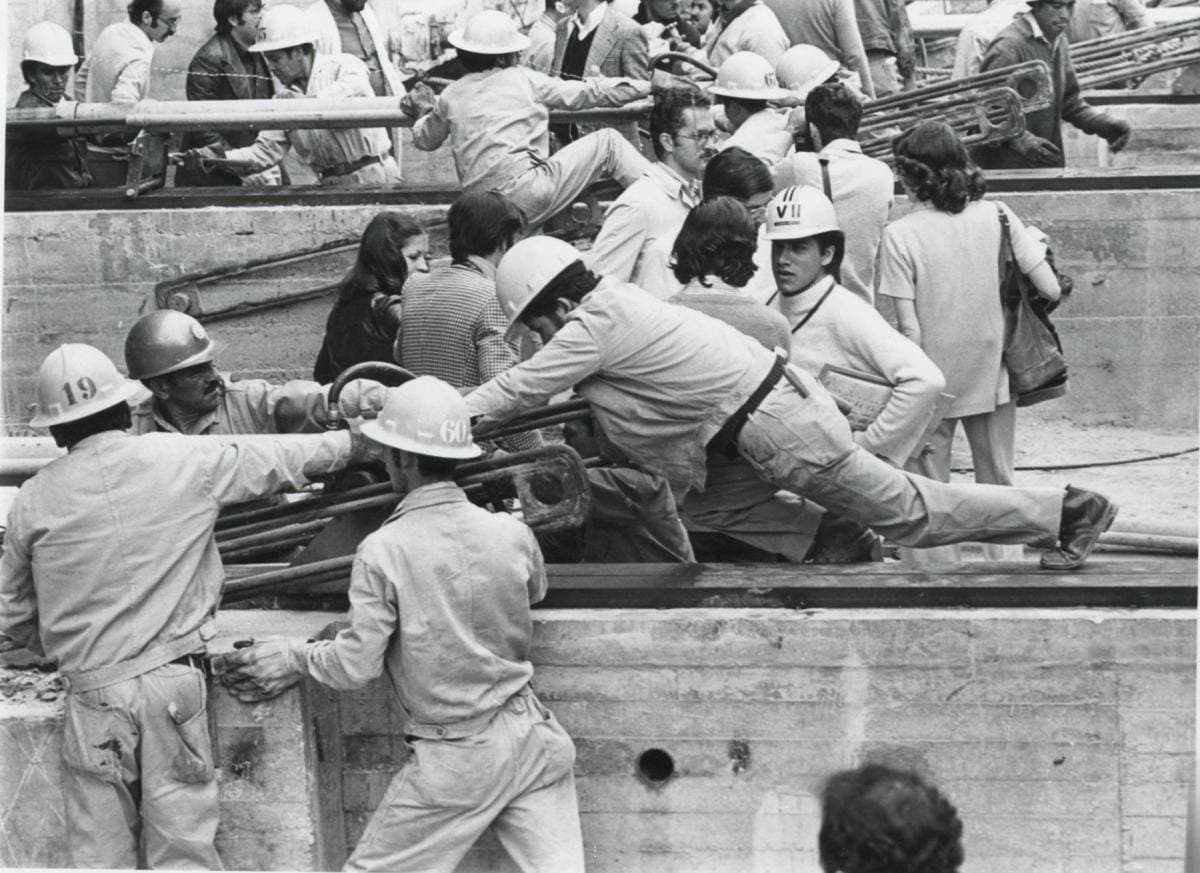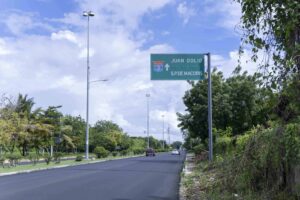
Without removing a single brick, without a single explosive, with the help of seven hydraulic jacks and five-centimeter steel rollers, Colombian engineers in Bogotá moved 29 meters a building with eight floors and 4,800 tons of weight, a milestone of the engineering Latin American that this Sunday turns half a century.
The architect of this colossal undertaking was Antonio Páez Restrepo, who managed to convince the Bogotá Mayor’s Office that instead of demolishing the building Cudecom, which was right in the place where a large avenue in the center of Bogotá should pass, it was better and possible to move it 29 meters south of where it was.
The news that he was going to move “a whole building” spread quickly through the streets and streets of cold and rainy Bogotá in 1974 and was followed in the country by black and white television and radio.
“Today it would be a milestone and even more so for that time,” Daniel Ruiz, professor of Engineering from the Pontifical Javeriana University.
And what Páez did, supported by other brilliant engineers of the time, was to “challenge the principles of structural mechanics, the principles of structural stability in order to guarantee that our heritage, as in the case of that building“It will not end up being demolished, he adds.

No margin of error
To materialize the utopia, it was necessary to synchronize the work of 400 people, including engineers, technicians, construction masters and assistants. To move it, a thousand-ton mobile structure was used, made up of steel rollers five centimeters in diameter and seven hydraulic jacks.
“Even today it sounds crazy to do that,” remarks Ruiz, who remembers that it is not simple to say “I’m going to take a building and tomorrow it will be 29 meters south of where it originally was. Buildings are not made to be moved from one place to another,” he emphasizes.
Nowadays this transfer can be carried out in Colombia but with accelerometers, sensors that measure movement three-dimensionally, a whole arsenal of technological aids unlike that time when “there was not even a laptop,” highlights Ruiz, who has just won the national award engineering seismic studies that allow heritage buildings not to collapse when there are tremors.
What was done on Sunday, October 6, 1974 “was a milestone that raised the engineering Colombian civil society because it demonstrated that it could successfully tackle challenging projects,” he explains.
At that time, moving buildings, especially monuments, was common in countries like the United States and Europe where engineering It has been more developed, but not in Latin America.
Ruiz considers that currently the engineering Colombia does not embark on these projects because the country has other needs and has the quality and expertise to carry out large works such as roads, tunnels, the Bogotá Metro and the development of railway infrastructure.
“There are bridges, roads and other works that are very well built, but unfortunately what is recorded and appears in the media is when some work collapses,” he said.
Vertigo numbers
Dealing with huge numbers was what the team that moved the building: It weighed 5,000 tons, equivalent to 100 loaded trucks.
“Let’s imagine moving those 100 tractor trailers at the same time, but also not ‘happy with that’, then they added two more floors which increased the height of the building after its transfer,” notes engineer Ruiz, who also remembers that the mass moved at a speed of 20 centimeters per minute.
For 30 years, Cudecom, designed by architect Medardo Serna Vallejo, was in the Guinness World Records as the heaviest structure to have been moved from its location. However, in 2004 the title was won by building Fu Gang in China.
“I remember that at the end of the transfer, after 10 hours, the crowd that had gathered to watch the event since the morning (more than two thousand people) shouted in unison: “Long live Colombia!” It was Sunday, October 6 1974, at 6:06:50 in the afternoon It was a triumph of the. engineering Colombian,” Páez wrote during his lifetime when remembering the conclusion of what was his masterpiece.
Nowadays the building Cudecom houses an entity of the national railways and is still standing with visible signs of abandonment in the middle of the infernal car traffic on 19th Street and Avenidas Caracas, in the center of Bogotá.
Without a doubt, his best days have already passed but he hopes for a better destiny as requested by Jesús Sierra, a 71-year-old taxi driver who, every time he passes through the sector, does not forget that in order to see the event up close, he did not attend school, like other colleagues. of class.



